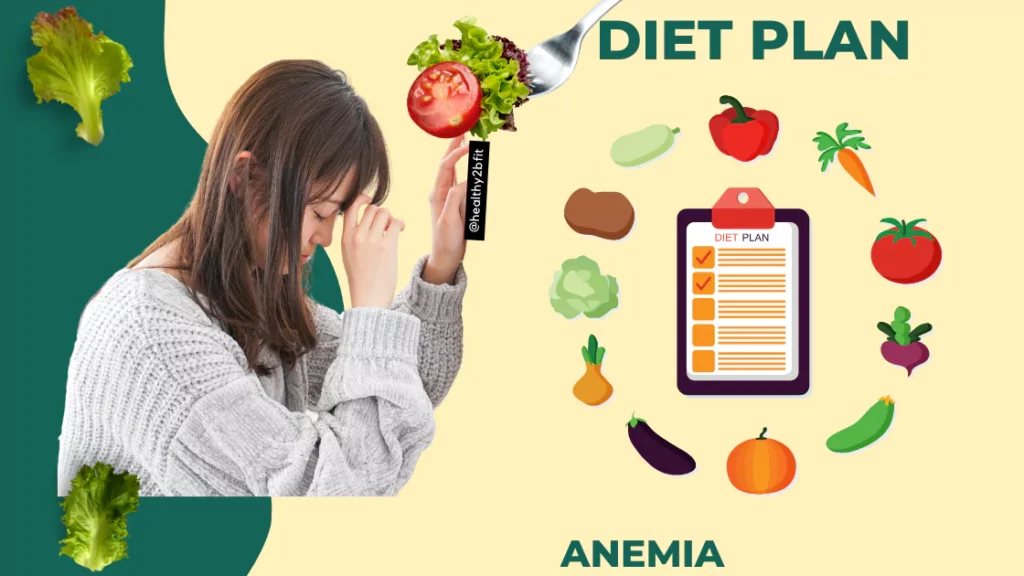Diet Plan for Anemia
Boost Your Hemoglobin Levels with Customized Our Anemia Diet Plan
Diet and nutrition strategy to Help Combat Anemia
Manage anemia and improve hemoglobin levels with iron-rich diet plans
Understanding the Importance of Diet in Anemia
Anemia can cause fatigue, weakness, and other health issues due to low hemoglobin levels. At Healthy2Bfit, we create personalized diet plans that incorporate iron-rich foods to help combat anemia. We tailor the diets to your dietary preferences and nutritional needs, using nothing but easily available Indian foods.
Benefits of Our Anemia Diet Plans

Iron-Rich Foods
Includes foods that are high in iron and other essential nutrients.

Improved Energy Levels
Helps increase hemoglobin levels, reducing fatigue and weakness.

Personalized Plans
Customized to your hemoglobin levels and food preferences.

Expert Guidance
Advice and follow-ups from experienced dieticians specializing in nutritional health.
How Our Anemia Diet Program Works

Initial Consultation
Discuss your health, dietary habits, and goals with our dieticians.

Customized Diet Plan
Get your diet plan rich in iron and essential nutrients.

Regular Follow-ups
Continuous support and adjustments to your diet plan based on progress.

Lifestyle Tips
Guidance on other lifestyle changes to support your health.
Sample Anemia Diet Plan
Day 1 Example:
Breakfast : Bajra (pearl millet) porridge with jaggery and almonds
Mid-Morning Snack : A glass of beetroot juice.
Lunch : Palak (spinach) paneer with whole wheat roti and a side of sprouted moong salad.
Evening Snack : Handful of roasted chana (chickpeas).
Dinner : Methi (fenugreek) thepla with curd and a bowl of dal.
Note: Each diet plan is customized to meet your specific health needs. Connect with us on Facebook now!

Success Stories from Our Clients

Neeraj Sharma

Roop Matharoo

Rajni Kamboj

Pooja Mahajan

Lakhwinder kaur

Kirti Wandile-Chandankhede

Gurpreet Ghumaan

Daman Bindra
Improve Your Hemoglobin Levels with Diet Plan Customized Only for You!
Chat with us on Instagram
Nourish your health and combat anemia with our expert diet plans.
Book Appointment Contact UsFrequently Asked Questions
Yes, a proper diet rich in iron and other essential nutrients can help improve hemoglobin levels.
Our diet plans include iron-rich foods like green leafy vegetables, legumes, and whole grains, tailored to your preferences.
Your diet plan will be reviewed and updated regularly based on your progress and any changes in your hemoglobin levels.
Yes, we provide guidance on foods to avoid that inhibit iron absorption or exacerbate anemia symptoms.
